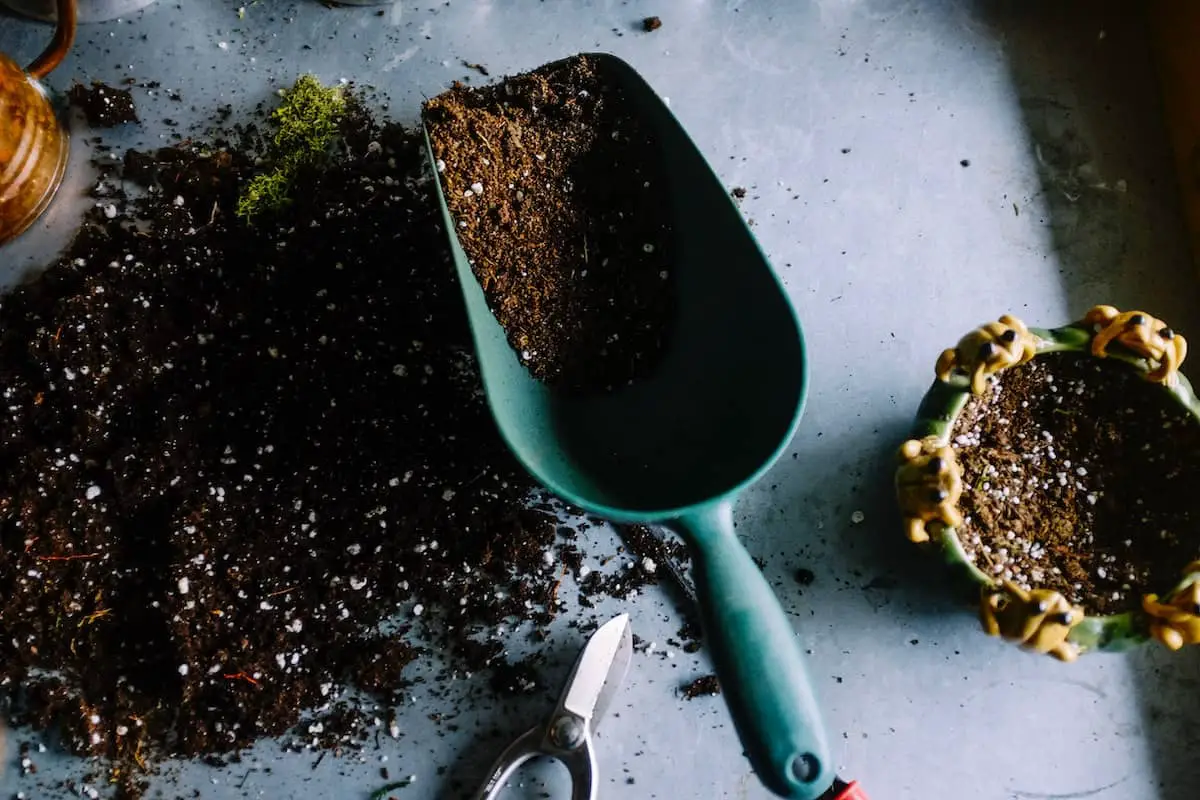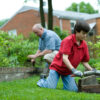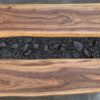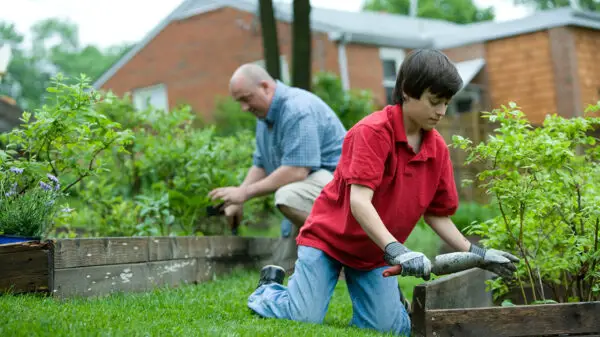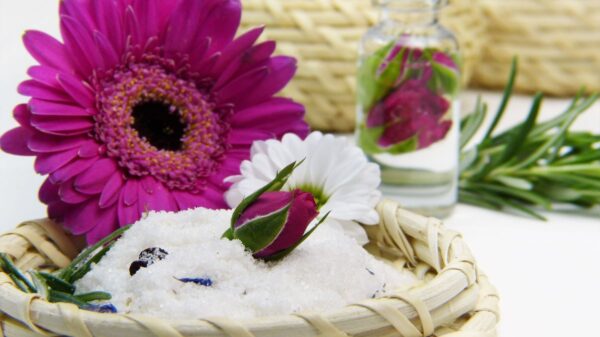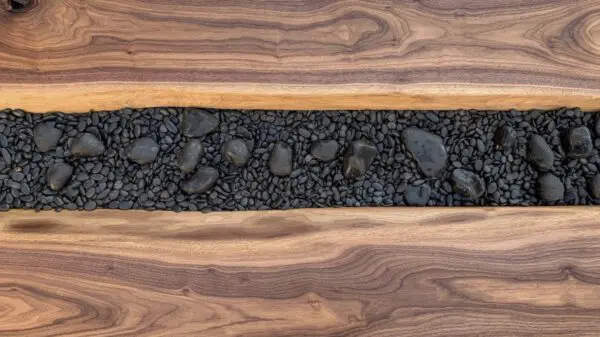Best Ideas for Low-Maintenance Flower Beds
That’s right! Yours! You may be looking outside and desiring to spice up your yard with the right flowers but concerned about the maintenance it would take to keep them alive and thriving.
You also may be thinking that you need low maintenance because getting the family on board with helping in the garden is not the easiest thing to do. Well, we have your back. No matter what your age, getting the family involved in the flower garden can be a fun and rewarding experience.
Let’s get to planning your low-maintenance garden. Ultimately, you have to take a good look at your house and the land around it. What is going to look the best and have the most aesthetically pleasing feel whether you are enjoying it from the house or just passing by. Let’s take a look at some ideas.
1. Stone or Gravel Flower Beds
A stone or gravel bed is the perfect solution for those who want a low-maintenance flower garden. Stone and gravel require very little care and will not need to be replanted every year. Simply add some mulch to keep the weeds down and your stone or gravel bed will look great year after year.
There are many ways to create a beautiful stone or gravel flower bed. Here are some tips to help you get started:
- Choose the right location. A sunny spot in your yard is ideal for a flower bed. Avoid locations that are prone to flooding or that receive too much shade.
- Prepare the soil. Remove any weeds and loosen the soil with a shovel or tiller. Add compost or other organic matter to improve drainage and provide nutrients for your plants.
- Select the right plants. Consider the size, shape, and color of the plants you choose. Be sure to select varieties that are appropriate for your climate zone.
- Lay out your design. Use string or garden hose to outline the shape of your flower bed. Then, use a spade or trowel to dig trenches for your stone or gravel border.
- Install the border. Place the stones or gravel in the trenches and backfill with soil. Tamp down the soil to secure the border in place.
- Plant your flowers. Add some color to your flower bed by planting annuals, perennials, or bulbs. Be sure to water regularly and fertilize as needed.
2. Perennial Beds
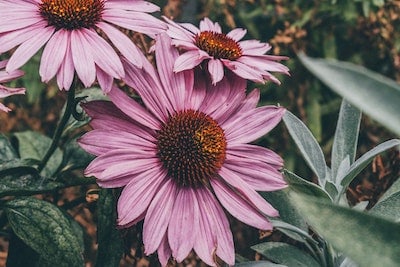 Perennial flowers are another great option for those looking for low-maintenance flower beds. Perennials are plants that live for more than two years.
Perennial flowers are another great option for those looking for low-maintenance flower beds. Perennials are plants that live for more than two years.
Most perennials die back to the ground each winter and then regrow in the spring. Some, like trees and shrubs, keep their leaves all year long.
Perennials come in all shapes, sizes, and colors. There is a perennial for just about every garden situation.
You can find perennials that bloom in the spring, summer, or fall. You can also find perennials that grow in sun or shade.
Perennials are easy to care for. They don’t need to be replanted every year like annuals do. And, they don’t need as much water as most other plants. Just remember to fertilize them in the spring and cut them back in the fall.
Here are some tips for creating a beautiful perennial flower bed:
- Choose the right location. Perennials need at least six hours of sunlight each day. They also prefer well-drained soil. Avoid locations that are prone to flooding or that receive too much shade.
- Prepare the soil. Remove any weeds and loosen the soil with a shovel or tiller. Add compost or other organic matter to improve drainage and provide nutrients for your plants.
- Select the right plants. Consider the size, shape, and color of the plants you choose. Be sure to select varieties that are appropriate for your climate zone.
- Lay out your design. Use string or garden hose to outline the shape of your flower bed. Then, use a spade or trowel to dig trenches for your border.
- Install the border. Place the stones or gravel in the trenches and backfill with soil. Tamp down the soil to secure the border in place.
- Plant your flowers. Add some color to your flower bed by planting annuals, perennials, or bulbs. Be sure to water regularly and fertilize as needed.
3. Cottage Gardens
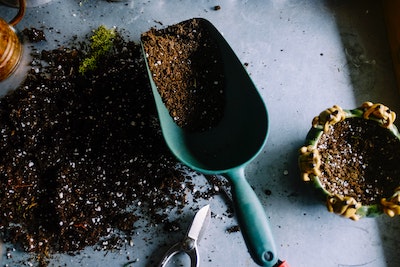 To have a cottage garden, one must first understand what it is. A cottage garden is simply a garden that is normally found surrounding a cottage.
To have a cottage garden, one must first understand what it is. A cottage garden is simply a garden that is normally found surrounding a cottage.
These gardens are usually characterized by their informal design, abundant flowers, and often include a mix of both ornamental and edible plants.
The best way to take care of such a garden is to keep it simple and low maintenance.
After all, the goal is to enjoy the beauty of the flowers and not spend all day working in the garden! Here are some tips on how to take care of a cottage garden:
- Start with good soil. This is the foundation of any healthy garden, so be sure to invest in quality soil that will provide adequate drainage and nutrients for your plants.
- Choose the right plants. When selecting plants for your cottage garden, be sure to choose varieties that are known to be low maintenance and resilient. This way, you won’t have to spend a lot of time (or money) on upkeep.
- Don’t forget the mulch! Mulching is essential for keeping weeds at bay and retaining moisture in the soil. Be sure to use an organic mulch, such as bark or leaves, to avoid harming your plants.
- Water regularly. Cottage gardens require regular watering, especially during the hot summer months. Be sure to check the soil before watering to ensure that it isn’t too wet or dry.
4. Container Gardens
There are many different types of containers that can be used for gardening, and the best type of container to use will depend on the plants you are growing and your personal preference. Some common types of containers include plastic pots, ceramic pots, wooden barrels, and hanging baskets.
When choosing a container for your garden, it is important to consider the size of the container and the drainage holes. The container should be large enough to accommodate the roots of your plants, and it should have sufficient drainage holes to allow excess water to escape. It is also important to choose a material that is durable and will withstand the elements.
Once you have selected a suitable container, you will need to fill it with potting mix or soil. Be sure to use a high-quality potting mix or soil that is free of weed seeds and pests. You can also add some organic matter to the potting mix or soil to improve drainage and provide nutrients for your plants.
When planting your container garden, be sure to water the plants thoroughly and regularly. Container gardens often require more water than traditional gardens because the roots are confined to a small space. Be careful not to overwater the plants, however, as this can lead to root rot.
5. Wildflower Meadows
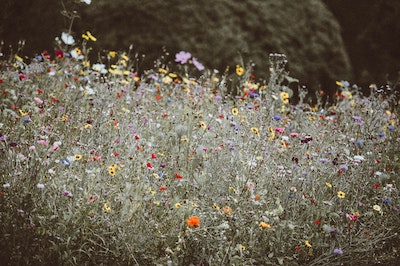 When it comes to creating a beautiful, natural-looking landscape, few things are as stunning as a wildflower meadow.
When it comes to creating a beautiful, natural-looking landscape, few things are as stunning as a wildflower meadow.
Not only do wildflowers add color and visual interest to your yard, but they also attract pollinators like bees and butterflies.
If you’re thinking about planting a wildflower meadow of your own, here’s what you need to know.
- The first step is to choose the right location. Wildflowers need plenty of sun and well-drained soil in order to thrive. If you’re not sure whether your chosen spot meets these requirements, you can always do a simple test by digging a hole and filling it with water. If the water drains away within an hour or two, the site is probably suitable for wildflowers.
- Now it’s time to prepare the soil. If you have a large area to work with, you can simply clear away any existing vegetation and loosen the top layer of soil with a rake. If you’re working with a smaller space, you may need to remove the existing vegetation and then amend the soil with compost or other organic matter.
- Once the soil is ready, it’s time to sow your wildflower seeds. You can do this by hand or with a seed spreader. If you’re sowing by hand, simply scatter the seeds over the prepared area and then lightly rake them into the soil. If you’re using a seed spreader, set it to the appropriate setting and then walk along your chosen path, sowing the seeds as you go.
- Once the seeds are in place, all that’s left to do is water them well and wait for them to germinate. Wildflowers typically germinate within two weeks, but some species may take longer. Once they’ve sprouted, continue to water them regularly until they’re established.
Final Thoughts
Gardening is a great way to spend time together as a family while also getting some fresh air and exercise. You also don’t have to be an expert or spend a lot of time making sure they are taken care of. By following these tips, you can have an amazingly stunning low-maintenance flower garden that will bring a smile to your face.


